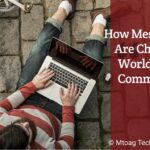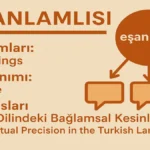The term “Trump funding freeze” refers to a series of decisions made during former U.S. President Donald J. Trump’s administration to halt, reduce, or redirect federal funding across various sectors, programs, and international initiatives. These freezes, often implemented through executive orders, budget proposals, or administrative actions, were aimed at reshaping government priorities, cutting perceived inefficiencies, and reinforcing political objectives.
This article delves into the most significant funding freezes enacted by the Trump administration, their justifications, economic and social impacts, domestic and international consequences, and the debates they sparked. Whether motivated by fiscal conservatism or ideological beliefs, these decisions left a lasting mark on policy discourse and institutional operations.
Key Areas Affected by the Trump Funding Freeze
1. Foreign Aid and International Organizations
United Nations and WHO Funding Cuts
One of the most high-profile funding freezes under the Trump administration targeted international institutions. The U.S. withdrew or significantly reduced contributions to:
- The World Health Organization (WHO) amid the COVID-19 pandemic, accusing it of mismanaging the crisis and being overly influenced by China.
- United Nations programs, including the United Nations Relief and Works Agency (UNRWA), citing inefficiency and alleged bias against U.S. allies.
Foreign Aid Reductions
Large-scale freezes and redirections affected aid to countries in Africa, Latin America, and the Middle East. Notable examples include:
- Central American nations (El Salvador, Guatemala, Honduras)—funding was cut to pressure them on immigration policy.
- Palestinian territories—aid was halted to influence geopolitical negotiations.
2. Domestic Science and Research Programs
National Institutes of Health (NIH) and Environmental Protection Agency (EPA)
Funding for scientific research, especially related to climate change, environmental protection, and public health, was targeted:
- The EPA saw budget freezes and staffing reductions.
- Grants supporting climate change research were cut or reassigned.
- NIH research on fetal tissue was paused, citing ethical concerns.
3. Education and Public Services
Title X and Planned Parenthood
The Trump administration restructured Title X funding, affecting family planning services:
- Funding was withdrawn from Planned Parenthood and similar organizations that referred patients for abortions.
- The policy, known as the “gag rule,” limited speech within federally funded clinics.
Public Education and Charter School Focus
There were efforts to freeze or redirect public education funds toward:
- Charter schools and school voucher programs.
- Cuts in support for public school grants, particularly in low-income areas.
4. Climate and Environmental Initiatives
Paris Agreement Withdrawal
Although not a freeze in the traditional sense, withdrawing from the Paris Climate Accord led to defunding international environmental programs.
Department of Energy Cuts
Research on renewable energy and energy efficiency programs experienced budget freezes, while funding for fossil fuel projects was maintained or expanded.
5. Federal Workforce and Agencies
Hiring Freezes
Early in the administration, a federal hiring freeze was implemented, affecting recruitment and operations across multiple agencies.
Budget Cuts to Agencies
Departments like the State Department and Department of Housing and Urban Development (HUD) faced proposed funding reductions as part of broader fiscal strategies.
Rationale Behind the Funding Freezes
Fiscal Conservatism
The administration emphasized reducing government spending and the national deficit. Funding freezes were portrayed as tools to:
- Eliminate wasteful spending
- Refocus resources on core national interests
- Encourage self-reliance in international allies
Political and Ideological Alignment
Policies aligned with conservative values, focusing on:
- National sovereignty
- Anti-abortion stances
- Skepticism of multilateral institutions
- Deregulation and free-market principles
Strategic Leverage
Funding freezes were also used as geopolitical tools:
- Pressuring foreign governments on immigration or trade
- Signaling discontent with international institutions
- Advancing diplomatic priorities, such as the Middle East peace plan
Domestic Reactions and Legal Challenges
Support and Praise
Conservative lawmakers and interest groups applauded many funding freezes, citing:
- Fiscal responsibility
- Moral and ethical governance
- Redirection of funds to domestic needs
Criticism and Protests
Progressive organizations, scientists, educators, and international partners criticized the freezes for:
- Undermining vital public services
- Politicizing science and healthcare
- Weakening global cooperation
Legal Actions
Several funding freezes led to court cases. Examples include:
- Lawsuits against the Title X restrictions
- Court interventions in redirected Pentagon funds for the border wall
International Response and Diplomatic Fallout
WHO Funding Cutback During Pandemic
The decision to cut WHO funding during the early months of COVID-19 was widely condemned. Concerns included:
- Reduced pandemic response coordination
- Loss of U.S. influence in global health
- Increased reliance on other donors, like China
Aid Cuts and Migration
Cutting aid to Central American countries led to fears of increased migration and regional instability, undermining the very goals the policy sought to achieve.
Strained Alliances
Funding freezes affected relationships with NATO allies and global partners, especially in humanitarian and development contexts.
Economic and Social Impacts
Health and Science
- Delayed research breakthroughs, particularly in public health.
- Closure of clinics and reduction in preventive care services.
Education
- Reduced support for public schools in underprivileged communities.
- Growing divide between traditional public education and charter initiatives.
Environment
- Setbacks in climate research and green technology development.
- Weakened regulatory enforcement and environmental protection.
International Development
- Slowed progress in poverty reduction and humanitarian relief.
- Uncertainty in ongoing global development projects.
Post-Trump Reversals and Continuations
Biden Administration Actions
President Joe Biden reversed several of Trump’s funding freezes:
- Rejoined WHO and the Paris Agreement
- Restored Title X funding to broader providers
- Increased NIH and EPA funding
However, some measures and policy directions remained or were modified:
- Continued evaluation of foreign aid effectiveness
- Bipartisan skepticism toward unchecked international contributions
Lingering Effects
Despite reversals, the Trump funding freezes:
- Created precedents for executive authority over funding
- Redefined U.S. involvement in multilateral institutions
- Reshaped agency operations and long-term planning
Conclusion
The Trump funding freeze era marked a period of aggressive policy reshaping, driven by a mixture of fiscal restraint, ideological priorities, and geopolitical strategy. From healthcare and education to international diplomacy and environmental policy, the impacts were vast and far-reaching.
Supporters viewed the freezes as necessary corrections to government overreach, while critics saw them as undermining science, humanitarian values, and global cooperation. The legacy of these decisions continues to influence current debates on federal spending, international aid, and executive authority.
Understanding these funding freezes provides insight into how federal funding shapes national and international outcomes, and how political ideology can influence financial decision-making at the highest levels.
FAQs About the Trump Funding Freeze
1. What is the Trump funding freeze?
It refers to various actions during the Trump presidency to halt or redirect federal and international funding for political, fiscal, or ideological reasons.
2. Which sectors were most affected by the funding freezes?
Healthcare, science and research, foreign aid, education, and environmental programs were among the most impacted.
3. Why did the Trump administration cut WHO funding?
The administration claimed WHO mishandled the COVID-19 outbreak and was overly influenced by China.
4. Were the funding freezes reversed?
Many were reversed under President Biden, including those related to WHO, climate, and Title X.
5. Did the funding freezes face legal challenges?
Yes, several freezes led to lawsuits, especially in healthcare and immigration-related funding.
6. What long-term effects did the funding freezes have?
They reshaped agency operations, set new precedents, and influenced domestic and global policy discourse.











